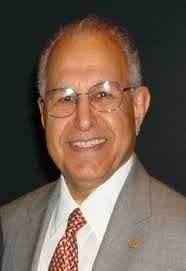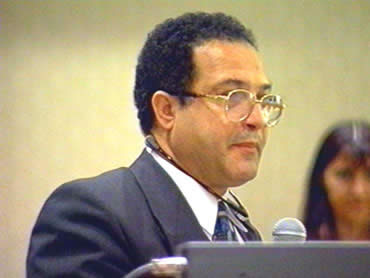Day :
- Novel Vaccines for Infectious Diseases | Immunology and Diabetes | Cancer and Tumor Immunobiology | Neuroimmunology | Novel Vaccines for Cancer | Mucosal immunology
Location: Piedmont I & II

Chair
Charles J Malemud
Case Western Reserve University, USA

Co-Chair
Martin J D’Souza
Mercer University, USA
Session Introduction
Rangaiah Shashidharamurthy
Philadelphia College of Osteopathic Medicine, USA
Title: Lipocalin2, an innate immune protein, deÞ ciency pre-dispose mice to pro-inß ammatory condition
Biography:
Rangaiah Shashidharamurthy has completed his PhD from University of Mysore, Karnataka, India and postdoctoral studies from Vanderbilt and Emory University. He is an Associate Professor of Department of Pharmaceutical Sciences, PCOM-School of Pharmacy, Georgia campus. He has published more than 38 papers in peer reviewed journals and also serving as an external reviewer and Editorial Board Member for many of the international peer reviewed journals. His research interest is in investigating the pathogenesis of chronic autoimmune/inflammatory disorders such as vasculitis and arthritis.
Abstract:
Lipocalin 2 (Lcn2), a 25KDa innate immune protein, known to be significantly up regulated in various inflammatory disorders including antibody-mediated arthritis, yet its biological role remains unclear. More recently, our studies have suggested that the regulation might be necessary for the resolution of inflammatory process. However, the exact mechanism involved in this process is still unknown. In this study, we have investigated the anti-inflammatory function of Lcn2 using RAW 264.7 cells (murine mouse macrophages) and Bone marrow derived macropahges (BMDMs). To determine the anti-inflammatory effects of Lcn2, an ELISA revealed that M2 macrophages in the presence of recombinant Lcn2 (rLcn2) significantly increased the expression of IL-10. However, RAW 264.7 cells treated with Lcn2 alone did not exert either pro- or anti-inflammatory effect. BMDMs from Lcn2 deficient mice exhibited increased INF-g induced STAT-3 activation but not the STAT-6. In addition, rLcn2 inhibited the RANKL-induced osteoclast (bone resorbing cells) formation. In conclusion, our data indicates that Lcn2 deficiency promotes the pro-inflammatory response through STAT-3 pathway. Furthermore, Lcn2 promotes anti-inflammatory function by potentiating the polarization of macrophages towards M2 phenotype and anti-inflammatory cytokine secretion. In addition, Lcn2 deficiency also increases RANKL-mediated osteoclast formation from its precursor cells. Taken together, these studies suggest that Lcn2 inhibits inflammation as well as excessive bone erosion conceivably through STAT-3 pathway during autoinflammatory conditions.

Biography:
Martin D’Souza has obtained his PhD degree from the University of Pittsburgh, PA, USA. He is a Professor and Director of Graduate Programs in the College of Pharmacy at Mercer University in Atlanta, Georgia. He also serves as the Director of the Clinical Laboratory and Co-Director of the Center for Drug Delivery Research. He has graduated over 50 PhD students and has published over 100 manuscripts. He has been the recipient of several research grants from the National Institutes of Health (NIH), the American Diabetes Association, the Georgia Cancer Coalition, and Georgia Research Alliance. He serves on several Editorial Boards and is a journal reviewer for over 10 scientific journals and has several patents issued in the area of Nanotechnology.
Abstract:
We have been working on designing and developing nanovaccines for infectious diseases at the Nanotechnology Laboratory at Mercer University. In particular, we focus on particulate vaccines that offer several advantages over the traditional vaccines, such as superior vaccine stability, the avoidance of cold-chain requirements, and the ease of manufacture. Further, the overall enhanced immune response due to a combination of factors, such as slow release of antigen from the particles and superior uptake into antigen presenting cells of the immune system, makes particulate vaccines the preferred choice of vaccine delivery. The availability of safe bio-degradable and bio-compatible polymers enhances its suitability for human use. Novel delivery of microparticulate vaccines such as transdermal delivery using microneedles and laser ablation, nasal delivery, buccal delivery, and oral delivery of vaccines, amongst others, will also be discussed. Several examples of successful delivery of particulate vaccines in the areas of infectious diseases such as gonorrhea, RSV, influenza, will be discussed.
Amit Bansal
Mercer University, USA
Title: Cationic pDNA vaccines for immuno-contraception and rabies control

Biography:
Amit Bansal has completed his MS in Pharmaceutical Sciences from Temple University and currently pursuing PhD at Mercer University College of Pharmacy. His research work at Mercer University was focused on development and evaluation of nanoparticulate vaccine as delivery vehicle thereby achieving sustained release of the vaccine with the aid of biodegradable polymers. He has prior research experience in the formulation development of immediate and modified release dosage forms, chemical modification of polymers and on the permeability of anticancer drugs across blood brain barrier (BBB). He has published one research paper, and is co-author of one review article and a book chapter.
Abstract:
Plasmid DNA (pDNA) vaccines have the potential to elicit an immune response against a wide range of diseases. However, the limitation of poor uptake of pDNA to antigen-presenting cells and rapid degradation of pDNA encapsulated in nanoparticles prompted us to fabricate an encapsulation free pDNA nanoparticulate vaccine. The negatively charge pDNA adsorbs on cationic PLGA (poly (d, l-lactide-co-glycolide)-chitosan nanoparticles and were used as means to deliver pDNA. Nanoparticles in the size range of 380-500 nm with a zeta potential of 50.0 mV were prepared using emulsification method. pDNA PLGA-chitosan nanoparticles were dispersed in poloxamer 407 that possess fluid property at 4oC and turns into gel at body temperature. Binding affinity of pDNA to cationic nanoparticles depends on pDNA to nanoparticles ratio (P/N) and complete immobilization of pDNA to cationic nanoparticles was achieved at a P/N ratio of 1/50. pDNA adsorption efficiency of 99.0 percent was achieved in pDNA PLGA-chitosan nanoparticles prepared using chitosan glutamate concentration of 2 mg/mL. Complex of pDNA and cationic nanoparticles was well tolerated and maintained cell survival rate greater than 80.0 percent. Additionally, cellular uptake was found to be both time and concentration dependent and followed saturation kinetics with Vmax of 11.389 µg/mL.hr and Km value of 139.48 µg/mL. In-vitro release study of P/N, 1/50 showed that the nanoparticulate vaccine can sustain the release of pDNA up to 24 hours. In our study, we demonstrated that pDNA PLGA-chitosan nanoparticles were non-cytotoxic, showed enhance cellular uptake, and sustain the release of pDNA for extended period.
Bernadette D’Souza
Samford University, USA
Title: Optimizing DC targeting by activation of the three signal pathway for immunotherapy in Melanoma
Time : 12:50-13:10

Biography:
Bernadette D’Souza is currently working as an Associate Professor at the McWhorter School of Pharmacy. She is a Formulation Scientist, working with cancer antigens and immunotherapy approaches using novel formulations. She has experience of working with formulations and targeted delivery systems for various routes of administration including oral, transdermal and injectable routes. She has expertise in various bioanalytical tools such as ELISA, LUMINEX, cell analysis using the cell analyser, etc. She has mentored over 10 students in the PharmD Program and has published in several peer-reviewed journals and presented at international conferences.
Abstract:
In this project, we have evaluated the potential of Na-alginate as the polymer matrix for controlled release of tumor associated antigens (TAAs) and measured the immunotherapeutic efficacy of the formulation to stimulate a cytokine dependent T-cell response. We have measured the three signal pathways activation by dendritic cells which would result in T-cell stimulation. Different immunostimulatory adjuvants were screened and optimized for increasing dendritic cell (DC) stimulation using cytokine release as the outcome. The best immunostimulatory adjuvants were combined with the tumor antigens and incorporated into the particulate formulation. An ex-vivo study with murine DCs derived from bone marrow and T-cells from splenocytes and lymph nodes in co-culture was carried out to determine the effect of the formulation on activating the three necessary signals for effective communication between the innate and adaptive immune system. We have further screened herbal products for IL-12 response to use as an adjuvant in the delivery system.
Keegan Braz Gomes
Mercer University, USA
Title: Immunotherapeutic approaches for the treatment of drug addiction

Biography:
Keegan Braz Gomes has completed his Bachelor’s degree in Biology from University of Massachusetts, Amherst and is currently a PhD Candidate in Pharmaceutical Sciences at Mercer University.
Abstract:
In recent years, there has been an increase in the abuse and addiction of designer recreational drugs, such as MDPV (Methylenedioxypyrovalerone) and alpha-PPP (α-pyrrolidino propiophenone). These psychostimulant drugs, more commonly referred to as “bath salts”, are synthetic cathinones seen as a cheap alternative to other stimulants such as methamphetiamine and cocaine. Bath salts can result in many adverse effects including increased heart rate, depression and death. In order to combat the abuse of bath salts, we developed a therapeutic microparticulate vaccine to reduce the effects of various psychostimulant drugs/their analogs on the brain. We characterized the drug taking effect as an increase in locomotory activity. Mice were injected with varying doses of the drug to establish a dose-effect curve for locomotory activity. Next, we formulated the anti-drug vaccine using two approaches: drug encapsulation within BSA (bovine serum albumin) matrix and creating microparticles and drug conjugation to BSA and creating microparticles. After vaccination, using the dose-effect curve as a guide, we injected the mice with the pure drug and correlated the changes in locomotory activity to vaccine efficacy for both approaches. Effective immunization across doses would result in a decrease in locomotory activity indicating a production of antibodies that bind specifically to the drug thereby, neutralizing the effects of the drug on the body. We will validate antibody response (innate and adaptive) and production using a series of in vitro studies including nitric oxide assays and anti-drug binding ELISAs.
Kimberly Braz Gomes
McMaster University, Canada
Title: Evaluation of a matrix protein virus-like particle (m2e vlp) subunit vaccine for influenza

Biography:
Kimberly Braz Gomes has completed her BSc in Neuroscience at Brock University and did her PhD in Pharmaceutical Sciences at Mercer University. She is currently a Post-doctoral fellow at McMaster University.
Abstract:
The purpose of this study was to investigate the efficacy and protection of the M2e VLP particulate vaccine administered transdermally in a pre-clinical mouse model for influenza. The M2e VLP was adsorbed onto Alhydrogel® and encapsulated into a polymer matrix with MPL-A®. For animal experiments, 4-6 week old male C57BL/6 mice (Charles River Laboratories, Wilmington, MA) were used. One prime (Week 0) and two booster (Week 3, 6) doses were administered to mice intramuscularly (I.M.) or transdermally (T.D.) using the AdminPatch® 1200 microneedle array. Mice were intranasally (i.n.) challenged with A/Phillipines/2/82 (H3N2) (4x103 PFU) live influenza virus on week 12. Blood samples were collected for detection of antibody titers every 3 weeks (Weeks 1, 4, 7 and 10). Animals were sacrificed at week 14 and T cell phenotypes were examined in the primary (bone marrow) and secondary lymphoid organs (spleen and lymph node). The whole lung tissue was isolated after challenge and homogenates were examined for determination of viral load. The microparticle yield was found to be 92% and the encapsulation yield was around 84% with a size of approximately 1.85μm. The M2e VLP, M2e VLP MP and M2e VLP MP + MPL-A® + Alhydrogel® showed elevated levels of IgG beginning at week 7, demonstrating that the M2e VLP is immunogenic. IgG1 antibodies were elevated in the M2e VLP MP + MPL-A® + Alhydrogel® and there were also levels of IgG 1 present in the M2e VLP and inactivated H1N1 vaccinated groups. The adjuvant group showed increased levels of Th1 related subclass IgG2a compared to M2e VLP MP and M2e VLP formulations. Mice that were immunized with the M2e VLP MP and M2e VLP MP + MPL-A® + Alhydrogel® had high expression of CD4+ T cells in the spleen and the lymph node. The M2e VLP MP + MPL-A® + Alhydrogel® showed high levels of CD8+ cells in the lymph node and there were very low levels of effector CD4+ and CD8+ T cells present in the bone marrow. The viral titer was shown to be 10-fold lower in the M2e VLP MP + MPL-A® + Alhydrogel® vaccinated mice compared to M2e VLP and M2e VLP MP. Since the current licensed vaccines against influenza are facing numerous challenges associated with production time, antigenic changes, route of administration, etc, we developed an extracellular domain matrix 2 protein virus-like particle (M2e VLP) micro particulate vaccine that is easy to formulate and is stable, immunogenic, safe and protective.
Lotika Bajaj
Mercer University, USA
Title: Formulation and evaluation of novel particulate vaccine against Gonorrhea

Biography:
Lotika Bajaj is a PhD student in the Department of Pharmaceutical Sciences, Mercer University, Atlanta. She completed her Masters of Pharmacy from Punjabi University, India. As a graduate Student in the Vaccine Nanotechnology Laboratory at Mercer University, her area of research is particulate vaccines against infectious diseases.
Abstract:
Gonorrhea is one of the most common sexually transmitted infections caused by Gram-negative Diplococcus bacteria, Neisseria gonorrhea. In 2009 301,174 cases of gonorrhea were reported in the US which accounts for 99.1 cases per 100,000 people. Patients suffer from symptomatic urethritis and cervicitis, pelvic inflammation, pus discharge, abdominal pain and dyspareunia. The treatment for gonorrhea involves use of antimicrobials but development of drug resistance is a great threat to public health and therefore novel methods for prevention of gonorrhea infection are needed. In the present study, we formulated microneedles to deliver and evaluate efficacy of dead gonorrhea bacteria in microparticles as vaccine through transdermal route. N. gonorrhoeae were grown in GC Broth. Bacteria were then harvested by centrifugation and three washings were done using PBS solution followed by centrifugation to concentrate bacterial suspension. This concentrated bacterial suspension was used to prepare vaccine microparticles using pre-crosslinked BSA. To this solution, concentrated bacterial suspension was added and microparticles were prepared by spray drying using a 0.5 mm nozzle at 120°C, 100% aspirator and 20 ml/h speed. The microparticles obtained were characterized. The percent yield for vaccine particles was 89% w/w. The size of the particles was determined by using Malvern Zetasizer, vaccine particles were 4.5 um in size and poly dispersity index (PDI) was 0.447. The charge on the particles was -25.1±5.79 mV. Vaccine particles were successfully prepared and characterized for yield, size, PDI and charge. Future studies will involve evaluation of this particulate vaccine for inducing an immune response in in-vitro and in-vivo studies.
Rikhav P Gala
The University of New Mexico, USA
Title: Design and development of ovarian cancer vaccines

Biography:
Rikhav Gala is a Research Scientist in the department of Pharmaceutical Sciences at the University of New Mexico, Albuquerque. His area of interest are formulations of dosage forms for small and large molecules. He has worked on the formulation and mechanistic characterizations of vaccines. He has worked on ovarian cancer immunotherapy which was NIH funded. This talk is focused on the ovarian cancer vaccine for delivery via the transdermal route using microneedles patch. He has a PhD and an MSc in Pharmaceutical Sciences.
Abstract:
The aim of this study was to monitor cell-based immune response developed by microparticulate ovarian cancer vaccine when administered via dissolving microneedles for transdermal routes in murine models and correlate it with tumor retardation observed in tumor challenge study. Immunotherapeutic strategies may serve as an alternative method to control the recurrence or progression of ovarian cancer. Therefore, we propose here microparticulate vaccine to treat as well as to prevent ovarian cancer. This vaccine resulted in tumor retardation when challenged with live tumor cells. Recently, we conducted a study to understand the mechanism by which the vaccine worked, where we compared humoral and cellular immune response with tumor suppression observed. We also checked the efficacy of the adjuvants to improve the efficacy of the vaccine. The microparticles were made up of cellulose polymers such as HPMC, CPD and EC. Alum and MF59 were used as adjuvants to enhance the immune response. The microneedles were formulated using polymers such as HPMCAS and PVA along with sugars such as maltose and trehalose for their dissolving properties. We have demonstrated the efficacy of vaccine microparticles containing whole cell lysate of ID8 ovarian cancer cells in retarding tumor growth in murine models. Spray drying process and the formulation used for this purpose could retain the immunogenicity of vaccine resulting in T-cell response. Thus, the microparticulate vaccine provides a promising approach in terms of cost-effectiveness, ease of production and patient compatibility.
Nihal S Mulla
Drake University, USA
Title: Adjuvanted allogeneic breast cancer vaccine: Maximizing cancer treatment by modulating the host immunity

Biography:
Nihal S Mulla has completed his PhD from Mercer University, Atlanta and Master’s in Pharmaceutical Sciences from Creighton University, Omaha. He has presented at several international conferences and published in reputed journals and publication houses. He is an active Member of the American Association of Pharmaceutical Scientists and American Association of Colleges of Pharmacy.
Abstract:
The aim of this study was to formulate and test the immunogenecity and efficacy of orally delivered microparticle based therapeutic adjuvanted breast cancer vaccines. CpG and cyclophosphamide were used as adjuvant and T-reg inhibitor respectively in order to maximize the immune response against tumor associated antigens (TAA’s). Allogeneic breast cancer vaccine was obtained by preparing a whole tumor lysate consisting of all the TAA’s of 4TO7 murine breast cancer cell line. Cellulose based vaccine microparticles containing TAA’s and CpG were prepared by spray drying (Buchi 190). Antigenicity of the vaccine mp’s was evaluated by a dendritic cell culture based assay. As part of the therapy, four-eight week old female Balb/c mice received oral vaccine microparticles as well as the adjuvant CpG and T-reg inhibitor cyclophosphamide (50 mg/kg; i.p). To asses the in vivo efficacy of vaccine mp’s, all the animals were challenged with 106 breast cancer cells subcutaneously. Tumor growth was monitored and immune organs like spleen, lymph node and bone marrow were collected for investigating the type of immune response generated. The particles were found to be in the size range of 4-5 µm with a zeta potential of +20±5 mV. According to in vitro studies, adjuvanted vaccine particles induced the highest immune response and showed maximum survival when compared to groups receiving blank particles. The findings proved that particulate nature of vaccine helps in better uptake of antigens by immune cells and immune recognition due to the presence of toll like receptor 4 (TLR-4) agonist, CpG.
Amit Bansal
Mercer University, USA
Title: Bio-fabrication and evaluation of alginate chitosan microcapsules of Insulin secreting β TC-6 cells in the treatment of Type 1 diabetes mellitus
Time : 15:35-15:55

Biography:
Amit Bansal has completed his MS in Pharmaceutical Sciences from Temple University and is currently pursuing his PhD at Mercer University, School of Pharmacy. His research work at Mercer University is focused on the development and evaluation of nanoparticulate vaccine as delivery vehicle thereby, achieving sustained release of the vaccine with the aid of biodegradable polymers. He has prior research experience in the formulation development of immediate and modified release dosage forms, chemical modification of polymers and on the permeability of anticancer drugs across blood brain barrier (BBB). He has published one research paper, and has been the Co-author of one review article and a book chapter.
Abstract:
Type 1 diabetes mellitus (T1DM) is a disease, characterized by lack of pancreatic islet function. Whole tissue transplantation appears to be viable alternative in the management of T1DM due to limitation of exogenous insulin therapy. Th is study aims at fabrication and evaluation of alginate-chitosan microcapsule encapsulated insulin secreting β TC-6 cells using specialized spraying
nozzle. Microcapsules encapsulated with β TC-6 cells were fabricated using novel spraying device producing uniform spherical microcapsules. Microcapsules were characterized for permeability using molecular weight markers, stability, and cell viability using live dead staining kit. Microencapsulated β TC-6 cells were transplanted intra-peritoneally in streptozotocin (STZ) induced diabetic mice and monitored for decrease in blood glucose level and immune acceptance. Spherical microcapsules with diameter in the range of 250-350 μm were prepared at an air fl ow rate of 250 L/hr. Microencapsulated β TC-6 cells in alginate capsules demonstrated prolonged viability. Mice in microencapsulated cells group received microencapsulated β TC-6 cells maintains normoglycemia for 35±5 days before rejection. However, mice in unencapsulated cells group received naked β TC-6 cells rejected graft within 1 or 2 days and exhibit both cellular and humoral immune responses. CD4 T-cells mediated Th 2 response i.e. humoral response was predominant in microencapsulated β TC-6 cells group and that was further confi rmed from elevated levels of CD45R. Microcapsules produced by specialized nozzle were reproducible with narrow size distribution and in addition provides fl exibility in producing diff erent sized capsules. Our fi ndings for in-vivo study revealed that transplantation of microencapsulated β TC-6 cells may be a viable
alternative in the management of T1DM with greater immune acceptance.
Rikhav P Gala
University of New Mexico, Mexico
Title: Formulation and testing of novel particulate vaccines for measles

Biography:
Rikhav P Gala is a Research Scientist–1 in the Department of Pharmaceutical Sciences at the University of New Mexico, Albuquerque. His area of interest are formulations of dosage forms for small and large molecules. He has worked on the formulation and mechanistic characterizations of vaccines. He has a PhD and an MSc in Pharmaceutical Sciences.
Abstract:
Measles is a highly contagious infection that is caused by the measles virus. It mainly affects children and can be fatal as well. The disease causes about 100,000 deaths every year worldwide, although it is completely preventable by vaccines. It affects people primarily in the developing areas of Africa and Asia causing the most vaccine-preventable deaths of any disease. Since the primary targets of this disease are children, we aimed at formulating an oral vaccine that would prevent the use of needles, making the vaccine more patient-compliant. The oral cavity of the mouth is covered by a lining that is rich in immune cells. These immune cells help the body to distinguish between harmful and harmless foreign material entering the body through the mouth. Oral disintegrating films (ODF) are films that dissolve when placed in the mouth. These films can be an inexpensive and an effective means to deliver drugs/vaccines orally without the use of needles. On dissolution, the microencapsulated vaccine antigen will be recognized by the immune cells in the mouth and further processed to produce protective antibodies against measles virus. Later, whenever the body is exposed to the virus, the protective antibodies present will be capable of combating the measles infection. The goal of this study was to explore the potential of oral disintegrating films (ODF) loaded with measles vaccine nanoparticles as a viable immunization strategy. In this preliminary study, two pigs were used in the in-vivo model in order to evaluate the immunogenicity of the measles vaccine formulation when administered via the buccal route using ODFs.
Rokon Uz Zaman
Mercer University, USA
Title: Development and characterization of a microparticulate vaccine formulation for metastatic breast cancer

Biography:
Rokon Uz Zaman is working as a PhD Student in the Department of Pharmaceutical Sciences, Mercer University, Atlanta. He has completed his MS in Microbiology from University of Dhaka, Bangladesh. As a Graduate Student in the Vaccine Nanotechnology Laboratory at Mercer University, his research is focused on targeted drug delivery using nanoparticulate vehicles.
Abstract:
Breast cancer is the most fatal form of cancer in females. Even with early diagnosis, 20% of women still develop metastases. Immunotherapy is being explored to provide a better treatment option, as current therapies against breast cancer are mostly invasive and pose numerous adverse effects. With this in mind, our purpose has been to formulate and evaluate a micro particulate therapeutic vaccine to provide a new line of therapy for metastatic breast cancer. Murine breast cancer cell line 4T1 was used as source of antigens. Vaccine microparticles were prepared by encapsulating 4T1 tumor associated antigens in cellulose polymer using spray dryer technology. Total protein concentration of the whole cell lysate was determined by Bio-Rad total protein assay. In vitro characterization of microparticles was conducted. In vitro innate immune response was determined by performing nitric oxide assay. Expression of surface co-stimulatory molecules on dendritic cells treated with vaccine microparticles and other controls were determined by flow cytometer using different markers (CD40, CD80, MHCI and MHC II). The yield of the microparticulate vaccine, following spray drying was 80±5% w/w. Total protein content of whole cell lysate was 3.48±1.25 mg/mL. The particle size was 1-4 µm. Zeta potential was -7±2 mV. There were significantly higher amount of nitric oxide released in the supernatant of cells exposed to vaccine microparticles compared to blank microparticles. CD40, MHC II and CD80, MHC I expression were significantly higher in the vaccine microparticles group compared to blank microparticles and vaccine suspension group.
Sucheta D’Sa
Charles River Laboratories, USA
Title: Promising immunotherapeutic strategies for RSV infection
Time : 16:55-17:15

Biography:
Sucheta D’Sa is currently a Research Scientist I in the Analytical Chemistry Department at Charles River Laboratories, Ashland, Ohio and serves as a Scientist in the conduct of assigned non-clinical research studies and study management. She has completed her PhD in Pharmaceutical Sciences from Mercer University, Atlanta, where her primary area of research was focused on development of microparticulate vaccines against cancer and infectious disease, to activate the immune system against specific antigens.
Abstract:
The respiratory syncytial virus (RSV) is highly prevalent in children and manifests itself in the form of bronchiolitis and pneumonia. Due to the failure of several vaccination trials using the inactivated form of the virus there is a need for a safe and effective vaccine. One of the major proteins present in the virus, is the fusion protein F, which can be integrated into a virus-like particle (VLP), yielding a highly immunogenic F-VLP antigen. Novel adjuvants that contain immunoenhancer molecules are now co-administered with human vaccines either licensed or in clinical trials. Adjuvants approved for human use were tested along with the microparticulate vaccine to improve the magnitude and longevity of the adaptive immune response. In this study, the F-VLP antigen was incorporated into a biodegradable polymer matrix and its in vitro immunogenicity was evaluated in a mechanistic study to evaluate surface co-stimulatory expression, wherein antigen presenting cells were stimulated with the vaccine-adjuvant combinations. Particulate vaccines with or without adjuvants significantly increase expression of immune markers such as nitric oxide and resulted in enhanced cell-surface expression of CD80/86, CD40, MHC II and CD54/ICAM-I on dendritic cells. In vivo studies using the non-invasive transdermal route demonstrated elevated humoral and cell-mediated immune responses in a mouse model. These preliminary studies prove the efficacy of the RSV F-VLP microparticulate vaccine as a novel immunotherapeutic strategey in the future development of a vaccine against RSV.

Biography:
Ravi Palaniappan obtained his Ph.D. degree from the Dr. MGR Medical University, India. He is a Associate Professor & Director of Vivarium in the College of Pharmacy at Mercer University in Atlanta, Georgia. Dr. Palaniappan has published over 50 manuscripts. He has been the recipient of several research grants from the National Institutes of Health (NIH) and private companies. He serves as a Journal Reviewer for over 10 Scientific Journals and has patents issued in the area of Nanotechnology.
Abstract:
Pneumococcal infections account for up to 1.6 million deaths annually, and the most
affected population are infants and elderly. Streptococcus pneumonia occurs in more than 100 serotypes, but currently available vaccines (Pneumovax and Prevnar) protects only against few serotypes. Hence, there is an immediate need for vaccine that could protect against all serotypes. PsaA (pneumococcal surface adhesin A) is a 37 KDa adhesin, present in all serotypes with minimal structural variation. Our objective was to administer PsaA encapsulated microparticles intra-nasally to induce mucosal and systemic responses, however, the nasal delivery is limited by the mucociliary clearance. Polycaprolactone microparticles were thus coated with mucoadhesive polymers such as chitosan (C), alginate (A) and gelatin (G) to improve mucoadhesion, and further evaluated as vaccine carriers.
- Workshop
Location: Piedmont I & II
Session Introduction
Helieh S Oz
UK Medical Center, USA
Title: Chronic immuno-inflammatory diseases and applications for green tea polyphenols

Biography:
Helieh S Oz has DVM and MS (U. IL); PhD (U. MN) and clinical translational research certificate (U. KY Med Center). Dr. Oz is an active member of American Association of Gastroenterology (AGA) and AGA Fellow (AGAF). Dr. Oz is an immune-microbiologist with expertise in inflammatory and infectious diseases, mucosal Immunity, drug discoveries, pathogenesis, and micronutrient. Dr. Oz was PI recipient for NIH-NCCAM grant to investigate Green tea polyphenols and Inflammatory Diseases. Dr. Oz has over 90 publications in the areas of chronic inflammatory disorders (pancreatitis, hepatitis, colitis, periodontitis), microbial and infectious diseases (e.g. Toxoplasmosis, Trypanosomasis, Babesiosis, Pneumocystis pneumonia). Dr. Oz has served as Lead editor for special issues such as Gut Inflammatory, Infectious diseases and Nutrition (Mediators of Inflammation 2017); Nutrients, Infectious and Inflammatory Diseases (Nutrients 2017); Gastrointestinal Inflammation and Repair: Role of Microbiome, Infection, Nutrition (Gastroenterology Research Practice 2016), and co-editor for Parasitic infections in pediatric clinical practice (J Pediatric Infectious Disease 2016) and Chagas Disease, Intech Open Science 2017. Dr. Oz is a member of editorial board for different advisory committees and an avid reviewer for several peer-reviewed journals.
Abstract:
Millions of people worldwide suffer from chronic inflammatory diseases including periodontitis, hepatitis, pancreatitis, gastrointestinal and neurodegenerative complications which can further lead to malignancies. Inflammation and immune response are required for the tissue defense, regeneration and healing process. Yet, exaggerated and chronic inflammation can advance to life-long debilitation, loss of tissue function and organ failure. Despite the millennial advancements in diagnostic technology and therapeutic modalities, there remains no effective cure for patients who suffer from inflammatory diseases. Therefore, over 40% of patients with inflammatory complications seek some form of complementary and alternative medical (CAM) agents as adjunct therapeutic modalities, to alleviate symptoms and possibly to prevent outcomes of inflammation, whether or not to consent their clinicians. There is not sufficient scientific information or international regulatory enforcements regarding the most available CAM agents which some may interact with patients’ current therapies with severe consequences. One of the most investigated agents is Green tea and it polyphenols (GrTP) with potent antioxidants effects. GrTP have important roles in regulating vital signaling pathways comprise transcription nuclear factor-kappa B mediated I kappa B kinase complex pathways, programmed cell death pathways like caspases and B-cell lymphoma-2 and intervention with the surge of inflammatory markers like cytokines (e.g. TNFα, INF, IL-2, IL-6, IL-10) and production of cyclooxygenase. This workshop will explore mechanism of actions for protective effects of GrTP and some reported adverse effects. In addition, possible applications for GrTP will be presented against chronic inflammatory complications and some food safety applications.
- Special Session
Location: Piedmont I & II
Session Introduction
Sami Bahna
Louisiana State University Health Sciences Center, USA
Title: A mouse ate the noble prize

Biography:
Sami L Bahna is a Professor and Chief of Allergy/Immunology at Louisiana State University in Shreveport, and Director of its Allergy/Immunology Training Program. Received MD with Honors at Cairo University, Doctorate in Public Health at Alexandria University, and Research Fellowship at University of Bergen, Norway. Had Pediatric Residency at University of Maryland and Allergy/Immunology Fellowship at Harbor-UCLA Medical Center. Certified by the American Board of Pediatrics and American Board of Allergy/Immunology. Fellow of the ACAAI, AAAAI, EAACI, AAP, Society of Pediatric Research. Published 185 papers and 39 book chapters. Served on the Executive Committee of the AAP Allergy Section, Board of Regents and Executive Committee of American College of Allergy, Asthma & Immunology, and Board of Directors of the Joint Council of Allergy, Asthma & Immunology. Served on editorial boards of several journals. Was President of the American College of Allergy, Asthma & Immunology (2009-2010). Received numerous national and international awards.
Abstract:
In making scientific advances, essential ingredients include scientific perseverance and utmost integrity. Temptation by personal fame can go too far with consequent scientific tragedies – as actually happened to a legendary scientist whom I will talk about. RAG was born to parents in the teaching profession. As a child, he watched his father die from cancer – an event that might have influenced his career choice. He was the first at his university to obtain combined MD and PhD degrees at the age of 25. He received training in pediatrics followed by immunology fellowship, then appointed to the faculty and reached the rank of Professor at the age of 32. His research mostly focused on transplantation immunology. He demonstrated the role of the thymus and described the humoral and cell-mediated arms of immunity. His publications exceeded 2000 and trained >300, most of whom became academic leaders. He received 13 Honorary Doctorate Degrees and multiple lifetime achievement awards. His exceptional contributions earned him the title “Father of Modern Immunology.” He was recruited to direct a world renowned institute for cancer research where he su, pervised the research of a large number of distinguished scientists. Because of dishonesty of a co-researcher, he moved to another institution where he founded research laboratories, built a major clinical immunology service, and initiated a training program. He maintained full-time duties until his death from cancer at the age of 81. RAG’s illustrious career was marred by a scientific fraud committed by one of his faculty members who claimed successful transplantation of skin grafts between two genetically unrelated strains of mice, while in fact he just made incision of a patch in the white mouse skin and painted it black. This unfortunate incident is believed by many to have cost RAG the Nobel Prize in Medicine.
- Innate Molecular Immunology | Cancer & Cellular Immunotherapy | Innate Immunity & Its Evasion Cell Mediated Immunity | Apitherapy and Immune System | Clinical Immunology | Immunopathology
Location: Piedmont I & II

Chair
Charles J Malemud
Case Western Reserve University, USA

Co-Chair
Eduard Rogatsky
Albert Einstein College of Medicine, USA
Session Introduction
Ahmed Hegazi1 and Ahmed F M Al Gethami2
1National Research Centre, Egypt 2Al Guthami Foundation, Saudi Arabia
Title: Immune enhancer of bee propolis

Biography:
Ahmed Hegazi is currently a Professor of Microbiology and Immunology in the National Research Center, Egypt. He received his master’s degree in 1979 and his PhD in 1981. His research work has been focused lately on bee product and their therapeutic effects. He has been the principal investigator on multiple research projects within the National Research Center. He has published 211 scientific papers and articles in national and international journals. He is also the President of the Egyptian Environmental Society for uses and production of bee products, Secretary of the Egyptian Society of Apitherapy, Secretary General of the African Federation of Apiculture Associations, and a Member of the International Apitherapy Commission (APIMONDIA). He got awards; First Class Decoration of Excellence, Egypt, 1995, The Senior Scientist Prize of National Research Center, Cairo, Egypt, 1996, The National Scientific Prize In Biological Sciences, Egypt, 1990, The Scientific Prize of The National Research Center, Cairo, Egypt, 1989, The Second Best Research Paper Award, International Congress of Propolis, Bones Aires, Argentina, 2000, Main Speaker Award, 10th Academic Conference, PRA and NAS (Nippon Apitherapy Soc.) Japan, 2006, two bronze medals from The International Innovation Fair of the Middle East, Kuwait, 2007 Awarded of Ghazi Wad Allah Salon Prize, 2008, Finally awarded the Merit Ward in Medical Sciences, National Research Centre, Egypt, 2016 and has fourpatents.
Abstract:
Propolis had been well documented in traditional medicine for treating systemic immune diseases, allergic diseases, viral diseases and organic-specific inflammatory diseases since more than one thousand years. During the last ten years, immunoregulatory and anti-inflammatory properties of propolis have been published. The therapeutic characteristics of propolis have been well known for a very long time. It has been used in folk medicine for different nations as early in Egypt as 3000 BC. It has recently become a subject of increasing interest for chemists and biologists. It had various biological and therapeutic activities. Propolis possesses variable biological activities activity was investigated on antiviral, antibacterial, fungicidal, anti-inflammatory, antitumor, antiparasitic, antioxidant, cytokines and immune response. This review was aimed to through more light on the enhancing activity of propolis on immune response.
Carl V Hamby
New York Medical College, USA
Title: Release of miRNA from dietary bacteria stimulates mucosal immunity to viral pathogens

Biography:
Carl V Hamby has completed his PhD from the University of Missouri-Columbia and conducted his Post-doctoral studies at the New York Medical College School of Medicine, USA. He is an Associate Professor in the Department of Microbiology and Immunology at New York Medical College and served as Graduate Program Director in the department from 1989-2000. He is a Member of the American Association for Cancer Research and has published more than 30 papers in peer-reviewed journals. He has been a Principal Investigator on NIH and private research foundation grants and is an ad hoc Reviewer for well-respected international journals.
Abstract:
We present a new paradigm that describes how naturally-grown, harmless micro-organisms in the diet can interact with the oral mucosal immune system to enhance its ability to ward off viral infections. This paradigm has evolved from two key observations: (1) Bacteria or yeast grown at natural rates retain miRNA that are released when encountering stressful environments, e.g., saliva, and (2) Highly stressed animals fed bacteria with a high content of releasable miRNAs are significantly more resistant to infections and toxicants. Our working hypothesis is that the release of miRNA is an adaptive response of bacteria to stressful environmental conditions, e.g. saliva, which the oral mucosal immune systems of animals have learned to recognize and respond to through co-evolution. We have characterized miRNA released from Lactobacillus casei by Next Generation Sequencing and have shown that they are derived from a limited set of genomic loci and stimulate the release of low levels of inflammatory cytokines from peripheral blood mononuclear cells while preventing the release of high levels associated with chronic inflammatory diseases. In vivo experiments in farm animals showed that feeding miRNA-releasing bacteria (not commercial probiotics) prior to exposure to pathogens or stressors significantly reduced animal morbidity and mortality and maintained weight gain. Feeding or injecting mice with miRNAs protected them from the lethality of a subsequent injection of LPS. Supplementing human and animal diets with generally regarded as safe miRNA-releasing bacteria may activate protective innate immune responses resulting in overall health benefits for populations under physical or parasitic stress.
Sandra M Cardona
The University of Texas at San Antonio, USA
Title: Dissecting the role of fractalkine receptor during experimental autoimmune encephalomyelitis: New approach utilizing a humanized animal model

Biography:
Sandra M Cardona is an Assistant Professor of Research in the Department of Biology at the University of Texas at San Antonio. Her career in neurodegeneration started at the Cleveland Clinic studying the biology of the CX3CR1 receptor in microglia during models of systemic inflammation and Parkinson disease. After receiving her PhD in Cellular and Molecular Genetics in 2006 at Kent State University (Ohio), she continued her Post-doctoral training at The University of Texas at San Antonio where she developed a new autoimmunity model of type-1 diabetes aimed to investigate the role of CX3CR1 receptor during diabetic retinopathy. Currently, she is characterizing humanized mice expressing the human CX3CR1 variant receptor in neuroinflammatory models of multiple sclerosis and diabetes and interested in the role of CX3CR1 in the differentiation and biology of astrocytes. She is author of 12 scientific contributions and Member of ASN, SfN and AHA.
Abstract:
Fractalkine is a transmembrane chemokine expressed by neurons and peripheral endothelial cells, which acts both as an adhesion molecule and as a soluble chemoattractant upon proteolytic cleavage. In the CNS, fractalkine functions by signaling through its unique receptor, CX3CR1 expressed by microglia. Fractalkine/CX3CR1 signaling regulates microglia neurotoxicity in models of neurodegeneration. During experimental autoimmune encephalomyelitis (EAE), CX3CR1 deficiency confers exacerbated disease characterized by severe inflammation and neuropathology. Among the CX3CR1 human polymorphisms, the CX3CR1I249/M280 variant is present in ~20% of the population and exhibits reduced adhesion for fractalkine conferring defective signaling. However, the role of CX3CR1, microglia function and its effect on neuronal damage during multiple sclerosis remains unsolved. The aim of this study is to assess the effect of weaker signaling through the human CX3CR1I249/M280 receptor on EAE disease, axonal damage and expression of ciliary neurotropic factor (CNTF). We hypothesize that dysregulated microglial responses in absence of CX3CR1 signaling enhance neuronal/axonal damage via down-regulation of CNTF, a key survival factor for neurons and oligodendrocytes. We have generated an animal model by inserting the CX3CR1I249/M280 human variant into the mouse CX3CR1 locus. Active EAE was induced in humanized mice via MOG(35-55) peptide immunization. Our results show an exacerbated EAE phenotype in mice expressing the human CX3CR1I249/M280 receptor, characterized by accelerated disease onset and higher maximum EAE score in comparison to WT mice. These results correlated with severe CNS inflammation, microglia activation and increased demyelination in the cerebellum, a similar phenotype observed in CX3CR1-deficient mice. Interestingly, flow cytometry data showed slight down-regulation of MHC-II and CD68 activation markers in humanized mice, suggesting an alteration in microglia function induced by defective CX3CR1 signaling. Our results provide instrumental validation of defective function of the CX3CR1I249/M280 human variant and the foundation to broaden the understanding of microglia dysfunction during neuroinflammation.
Yu-Kyeong Hwang
Cell Therapy Research Center, Green Cross Lab Cell Corp., South Korea
Title: Ex vivo-expanded allogeneic NK cells for treatment of refractory and recurrent lymphoma and solid tumors

Biography:
Yu Kyeong Hwang has worked in pharmaceutical company driven research institute for more than 25 years. Her main interest is immune activation by antigen stimulation, many of candidate peptides and DNA constructs were listed in patents. Based on long term experience of cellular immunology in T cell area, since 2014, she is a Director of Cell Therapy Research Center in Green Cross LabCell (GCLC) Corp. By developing NK cell therapeutics, she controlled all process from discovery to clinical trials of ex vivo expanded allogeneic NK cell which was the world’s first clinical trial. In the clinical trial phase I, she discovered the mechanism of allogeneic NK cell after infusion into patients. Currently this NK cell program goes on phase IIa against HCC. Another couple of clinical trials are preparing IND submission in Korea and US.
Abstract:
Allogeneic NK cells have been used for their activity for hematologic cancer by hematopoietic stem cell transplantation. During the last decades, anti-cancer activity of ex vivo expanded NK cells were demonstrated in several studies, both in vitro and in vivo. Previously, ex vivo expanded allogeneic NK cells (MG4101) from healthy unrelated donor showed potent anti-tumor activity with tolerable toxicity profiles in several xenograft models. From healthy donor’s peripheral blood mononuclear cells (PBMCs), NK cells expanded under good manufacturing practice (GMP) conditions. NK cells selectively killed cancer cells without demonstrating cytotoxicity against allogeneic non-tumor cells in co-culture assays, and show the anti-tumor activity in various cancer model including lymphoma, ovarian cancer, hepatocellular carcinoma, neuroblastoma and glioblastoma. Phase I clinical trial had been conducted in 18-advanced and refractory cancer patients with various solid tumor and lymphoma by dose-escalating infusing. No adverse effects were reported after, and changes of immune cell population and cytokine/chemokine levels were shown by NK cell infusion. Therefore, allogeneic NK cell treatment without T cell contamination is feasible for cancer patients, and good clinical outcome is expected if it is used with adequate preconditioning regimen. For more additive efficacies, two more clinical trials have been conducted in patient’s solid tumor after HSCT and in HCC patients after curative resection. Both study showed its safety and delayed progress free survival (PFS) and recurrent free survival (TTP), respectively. Based on this NK cell manufacturing process, new genetically modifying technology like chimeric antigen receptor (CAR) technology can be emerged. NK cell is one of option to solve the problem in adverse effect in CAR-T therapy. In cooperation with many of advanced technology, NK cell therapy can be a new modality for the cancer treatment as an off-the-shelf product.
Khadija Rafiq
Thomas Jefferson University, USA
Title: Down regulation of allograft inflammatory factor-1 prevents B cell infiltration to cardiac tissue during the development of type 1 diabetes

Biography:
Khadija Rafiq has her expertise in immunology and cellular biology. Over the past several years she has been investigating how the immune system affects cardiac myocyte growth and cardiac function with a focus on signaling molecules that are activated by inflammatory proteases. Her research interest focuses on elucidating the role of inflammatory serine proteases in the development of diabetic cardiomyopathy. The goals of her research are to identify novel signaling mechanisms that control cardiac cell growth and apoptosis.
Abstract:
Diabetes mellitus (DM) often causes chronic inflammation, hypertrophy, apoptosis and fibrosis in the heart and subsequently leads to myocardial remodeling, deteriorated cardiac function and heart failure. However, the etiology of the cardiac disease is unknown. Therefore, we assessed the gene expression in diabetic and nondiabetic groups of mouse left ventricular hearts using Affymetrix microarray analysis. Of the 517 inflammatory genes altered in the diabetic hearts, 97 and 61 at 4 weeks and 8 weeks respectively were up- or down-regulated at fold change >1.3 with P<0.05 vs. control, 23 genes from each time point were identified as B cell inflammatory genes responsible for humoral immunity, one of the top of these genes is allograft inflammatory factor-1 (AIF-1) which is associated with B cell function during inflammatory responses. Real–time reverse transcriptase-polymerase chain reaction confirmed the Affymetrix data. CD19 B cell marker and AIF-1 were both downregulated in diabetic hearts at 4W and 8W as compared to control. Interestingly, we showed for the first time that AIF-1 is responsible for B cell migration to the myocytes. This study suggests that diabetes attenuates AIF-1 expression, and this, in turn, prevents B cell migration that may lead to an increase of inflammation in the heart.
Mariusz Z Ratajczak
University of Louisville, USA
Title: Innate immunity as a pivotal player in mobilization of hematopoietic stem cells from bone marrow into peripheral blood
Biography:
Mariusz Z Ratajczak is a Professor of Medicine, the Henry M and Stella M Hoenig Endowed Chair in Cancer Biology and the Director of the Developmental Biology Research Program at the University of Louisville's, James Graham Brown Cancer Center, USA. He is an internationally known specialist in the field of adult stem cell biology. He is also known for his work on novel mechanisms of mobilization and homing of stem cells, biological role of extracellular microvesicles and molecular mechanisms of cancer metastasis. Among his prestigious awards are the 2014 Karl Landsteiner Life Achievement Award from the German Society of Transfusion Medicine and Immunohematotherapy and the 2008 Cancer Researcher of the Year award. He has published numerous books and more than 450 peer-reviewed publications and is a frequent speaker at conferences worldwide. He is a Visiting Professor at Kansai University in Osaka, Japan and Fudan University in China.
Abstract:
In steady state conditions low number of HSPCs always circulates in peripheral blood (PB) and lymph and undergoes a circadian rhythm in their PB circulation, with the peak occurring early in the morning and the nadir at night. The number of circulating HSPCs increases in PB in response to (1) systemic or local inflammation, (2) strenuous exercise, (3) hypoxia and (4) tissue/organ injuries. Moreover, in clinical settings, administration of some agents may induce forced egress of HSPCs into PB and increase their number in PB up to 100 fold in a process known as pharmacological mobilization. Such drugs include cytokine granulocyte colony stimulating factor (G-CSF) and the small molecular CXCR4 antagonist AMD3100; known as Plerixafor. Pharmacological mobilization is exploited as a means to obtain HSPCs for hematopoietic transplantations. Our previous research demonstrated that mobilization of HSPCs is a part of innate immunity response. This evolutionary ancient process is orchestrated by granulocytes and monocytes that trigger activation of complement cascade and collateral also coagulation cascade. Initiation of complement cascade activation and subsequently activation of coagulation cascade occurs in mannan binding-lectin (MBL) complement activation pathway dependent-manner. Mannan binding lectin activates subsequently MBL-associated serine proteases (MASP-1 and MASP-2) that cleave third complement component C3 and prothrombin. Cleavage of C3 leads to formation of classical C5 convertase and cleavage of prothrombin generates thrombin that possesses C5-like convertase activity. Finally, both C5 convertases cleave fifth complement cascade protein C5 and activate distal part of complement cascade that is crucial for egress of HSCPs from BM niches into PB. Mobilization of HSPCs as we recently learned is negatively regulated by heme-oxygenase-1 (HO-1) and inducible nitric oxide synthetase (iNOS). Therefore, inhibition of these enzymes by small molecular inhibitors may enhance mobilization process, which is an important clinical implication for patients that are poor mobilizers.
Masoud Edalati
Isfahan University of Medical Sciences, Iran
Title: Prevalence of autoantibodies in patients with multiple sclerosis in Isfahan province of Iran
Biography:
Masoud Edalati has completed his education in Medicine in 1999 and then joined specialty training as a Resident in Clinical and Anatomical Pathology and completed Residency in 2005. His research interest is in clinical immunology, hematopathology and also medical microbiology. He has been serving as a Lab Director since 2005.
Abstract:
Statement of the Problem: Multiple sclerosis (M.S) is a chronic, immune-mediated, relapsing-remitting disorder affecting young adults, which its pathogenesis is still largely unknown. Multiple sclerosis is the commonest cause of neurological disability in young adults. Chronic autoimmune disease like SLE can be mistaken for M.S and should be considered during clinical practice.
Objectives: The purpose of the present study was to determine the prevalence of autoantibodies in patients clinically and radiologically diagnosed with M.S in Isfahan province of Iran.
Methodology & Theoretical Orientation: From September 2015 to September 2016, 269 patients clinically diagnosed with M.S referred by neurologists to Milad Medical Diagnostic Lab to be evaluated for common auto antibodies. Autoantibodies were detected through Elisa and immunofluorescence (I.F) method.
Results: The serum of 10 (3.7%) out of 269 patients clinically diagnosed with M.S disease revealed ANA reactivity followed by 15 (5.57%) showing anti-MOG (anti-myelin oligodendrocyte glycoprotein) and 1 (0.37%) Aquaporin-4 antibodies (NMO-IgG/neuromyelitis optica-IgG) reactivity. The patients were negative for c-ANCA, p-ANCA and APL (anti-phospholipid syndrome) antibodies. The most common ANA immunofluorescence patterns for these patients were homogenous (diffuse 50 %) followed by speckled (40%) and centromere (10%) patterns.
Conclusion & Significance: When assessing patients suspected of having M.S, clinicians should consider immune-mediated disease like SLE, APS, vasculitis and other autoimmune disease, especially if the patient show atypical features for M.S.
Ivon T C Novak
National University of Cordoba, Argentina
Title: What about neutrophils and costimulatory molecules?
Biography:
Ivon T C Novak studied Biology and performed a PhD thesis at Faculty of Exact, Physical and Natural Sciences of the National University of Cordoba, Argentina, in 2003. She is currently a full-time Adjunt Professor of Department of Cell Biology, Histology and Embryology at Faculty of Medical Sciences, National University of Cordoba and Director of Elective Module of Basic Immunology at Faculty of Medical Sciences, National University of Cordoba. She is Magister in University Teaching, Regional Cordoba Faculty, and National Technological University. Her main research interest has been on Immunology, Cell Biology and University Education.
Abstract:
Human neutrophils not only limit their function to phagocytosis, production of reactive oxygen species and generation of neutrophil extracellular traps (NETs), but also modulate the immune response according to the microenvironment and the cell-cell interactions. As it is known, NETs are formed by chromatin and granular proteins which after stimulation are released to the extracellular environment. NETs have not only been involved as defence mechanisms, but they have also been linked to tissue damage, thrombosis, cancer immunoediting and autoimmunity. Poly morphonuclear neutrophils (PMNs) activated in vitro may express molecules normally associated with antigen presenting cells (APCs). T cell activation initiates with a first signal, the interaction of the antigenic peptide/major histocompatibility complex with the TCR, and a second signal, the costimulatory signal. Costimulatory molecules B7-1 (CD80) and B7-2 (CD86), which can be performed in neutrophilic granules, can be expressed in the surface under certain stimuli. May NETs contain costimulatory molecules? Recently we found CD80 and CD86 colocalized in NETs in autologous leukocytes cultures, after lipopolysaccharide (LPS) or ovalbumin (OVA) stimulation. The costimulation can be stimulatory or inhibitory; this depends on the receptor. The B7-1/B7-2:CD28/CTLA-4 pathway is known to be critical for immune response initiation and regulation. The presence of costimulatory molecules in NETs would let them influence the cell environment and would allow PMNs to exert function as APCs and modulatory functions of various subpopulations of T cells. Future research regarding the impact of NETs on the role of T cells must be performed. The variability of neutrophil functions according to its environment, physiological or pathological condition, and the expression of different surface markers have allowed to characterize different phenotypes of neutrophils, but there are heterogenea descriptions in literature, because parameters, methods, specie, tissue and biomarkers, are different. Neutrophils are very interesting cells implicated in innate and adaptive immunity.
Ruihua Chen
Bristol Myers Squibb, USA
Title: A high throughput platform for the identification of inhibitors of integrin-mediated TGFβ activation
Biography:
Ruihua Chen has worked in the pharmaceutical and biotechnology industry for 18 years in the capacities of discovery and translational research. From the diverse roles he has played various therapeutic areas he has worked on, he has come to a sense that drug targets can be shared in many diseases. He is currently working in the areas of immunology and oncology, and one of his passions is to maximize the values of compounds by finding uses outside these areas.
Abstract:
Integrins and Transforming Growth Factor beta (TGFβ) regulate multiple cellular processes including adhesion, migration, proliferation, extracellular matrix (ECM) homeostasis and epithelial-mesenchymal transition. Integrin–mediated TGFβ activation has been indicated in pathological conditions including fibrogenesis and immune suppression. Macrophages are a major cellular source of TGFβ. Alteration of macrophage phenotypes and aberrant activation of TGFβ lead to several fibrotic and immune diseases therefore inhibitors of TGF-β activation have potential values in multiple therapeutic areas. We have developed de novo Homogenous Time Resolved Fluorescence 1536-well binding assays using multiple integrins to identify inhibitors and to support mechanism of action studies. Further, we have developed a high throughput Detroit 562 cell co-culture assay to measure TGFβ activation. In conjunction with these studies, we have also utilized a macrophage polarization model and developed cytokine and mRNA profiling assays to explore potential pharmacodynamic and/or disease biomarkers. These studies offer a novel platform to identify novel inhibitors of TGF beta signaling associated with specific subsets of integrins.
Manal Mohamed Saber
Minia University, Egypt
Title: Therapeutic impact of EMAP II and CD13 expression in colorectal cancer
Biography:
Manal Saber has completed her PhD from Nottingham University. She is an Associate Professor of Clinical Pathology, Minia University, Egypt. She has published papers in peer reviewed journals and has been serving as an editorial board member of others.
Abstract:
Statement of the Problem: Colorectal cancer (CRC) is the third most commonly diagnosed cancer and a major cause of cancer mortality in the world. Despite advances in CRC treatment, a greater proportion of patients, highlighting the need for new immunotherapy. Endothelial monocyte-activating polypeptide-II (EMAP-II) is a multifunctional cytokine with pro-inflammatory properties. Aminopeptidase N (CD13) is a zinc-binding protease that has a role in cancerogenesis. It is proposed that both EMAP II and CD13 are involved in tumor progression and metastasis. The purpose of this study is to develop a novel immunotherapy expressing anti-EMAP and anti-CD13 antibodies in CRC.
Methodology & Theoretical Orientation: Expression of both EMAP II and CD13 was studied in CRC patients by immunohistochemistry, flow cytometry and ELISA. The antitumour effect of the anti-EMAP II and anti-CD13 antibodies was verified by therapeutic animal experiments in vivo.
Findings: There was a positive correlation between CD13 and EMAP II expression in CRC with accordingly decline in CD4 and CD8 cells. Coculture of peripheral T cells with recombinant EMAP II caused a significant increase in CD13+ T cells in comparison to control (P<0.001). In an animal model, an administration of anti-EMAP II and anti-CD13 antibodies resulted in extension of the survival of the mice compared to the untreated group. Furthermore, novel immunotherapy decreased CD13+T cells and increased CD4-positive T cells, CD8-positive T cells, NK cells. Furthermore, novel immunotherapy decreased the tumour-induced apoptosis of T cells.
Conclusion & Significance: This study has demonstrated a novel promising tumour immunotherapy for CRC.
Latif O Mohammed
University of Sulaimania, Iraq
Title: The role of TNF-ô€„, IL-1ô€… and IL-10 gene polymorphisms in resistance to toxoplasmosis infection among aborted women in Sulaimania city
Biography:
Abstract:
This study is achieved to investigate or observe the association between the polymorphisms of three mentioned interleukin and toxoplasmosis among aborted women in Sulaimania province. Toxoplasma gondii is one of an obligate intracellular parasite that causes toxoplasmosis. Cytokines have a role in its pathogenesis. The single nucleotide polymorphisms (SNPs) of each cytokine have been suggested to have role in etiologic. So, the aim of the presented study was to investigate the association between the SNPs of mentioned interleukins and toxoplasmosis in 50 toxoplasmosis –aborted women were admitted to maternity teaching hospital in Sulaimania governorate during the period Jan. 2017 – March 2017 to finish their pregnancy. SNPs were ascertained by PCR-SSP (Polymerase chain reaction-sequence specific priming) method in addition, 40 apparently healthy women (University staff and health staff) as control. Both Latex agglutination test and Enzyme linked immunosorbent assay for IgG and IgM observed that 34% of case were positive for IgG and IgM anti- Toxoplasma antibodies. This study showed that the single nucleated polymorphisms (SNPs) of TNF-α, IL-10 and IL-1β demonstrated no significant positive or negative association with toxoplasmosis in the samples of aborted women in Sulaimania province/north of Iraq.
Seung Chung
University of Illinois at Chicago, USA
Title: Complement C5a in nerve regeneration under inß ammatory injury

Biography:
Seung Chung received his PhD in Neuroscience in 2008 from University of Calgary Cummings School of Medicine, Canada and currently is an Assistant Professor at the University of Illinois at Chicago College of Dentistry. His lab focuses on determining the role of the complement system in nerve regeneration of human carious teeth and investigating the molecular mechanisms of the p38 mitogen activated protein kinase and chromatin-remodelling factor Brg1 in nerve myelination and remyelination.
Abstract:
Tooth nerve damage from bacterial invasion (decay) or trauma is very common. Proper nerve regeneration is crucial for maintaining tooth viability as shown by previous studies of nerve denervation using rodent models that resulted in severe defects on tooth structure and function. These defects include significantly reduced survival and regeneration rate of exposed dental pulp tissue and severe morphological defects such as dento-alveolar ankyloses. Although dental nerve appears to have a critical importance in maintaining tooth morphology and viability, very little is known about initial mechanisms that regulate dental nerve regeneration especially beneath a caries injury site. To date, no investigation has systematically explored the effect of the complement system, which is one of the first components of innate immunity and inflammation, on dental nerve regeneration and its interaction with pulp fibroblasts under caries. Complement activation on human pulp fibroblasts has been suggested to provide a link between pulp inflammation and its regeneration capacity. Of central interest, we demonstrated for the first time that nerve outgrowth is controlled by local elevated expression of discrete nerve growth factors (neurotrophins) released from nearby pulp fibroblasts upon carious injury through interaction with the complement system. Our results demonstrate that complement component C5a receptors (C5aR) are ectopically expressed in human pulp fibroblasts both in vitro and in vivo shortly after carious injury. We provide direct evidence of C5aR`s critical role in the expression and secretion of brain-derived neurotropic factor (BDNF) by pulp fibroblasts leading to a significant neurite outgrowth enhancement toward the injured site. Surprisingly, we further confirmed the negative regulation of BDNF-secretion by C5L2, a previously defined ‘non-functional C5a receptor’, in biological regulation of C5a signaling. p38a mitogen activated protein kinase (MAPK) is well established as a mediator of inflammatory responses and previously suggested in downstream regulation by C5aR in other systems. Indeed, our initial assays demonstrate that p38 MAPK plays a key role in the modulation of neurotrophin secretions and this is C5a signalling dependent linking this key molecule to the mechanisms of action of C5a. Our study provdes molecular understanding of initial steps of dentin-pulp regeneration by linking neurite outgrowth to pulp fibroblast function through complement system activation. These studies will provide the basis for potential therapeutic interventions of dentin repair and vital tooth preservation.
Maurilio Toscanode Lucena
Universidade Federal de Pernambuco, Brasil
Title: Buschke-Loewenstein Tumor: a case series from Brazil
Biography:
Abstract:
Buschke-Loewenstein Tumor or giant condyloma acuminatum is a disease caused by a DNA virus, the self-inoculable human papilloma virus (HPV), being sexually transmitted. Histo-logically BLT is a benign tumor, but with malignant clinical behavior and a high propensityfor local recurrence and malignant degeneration. The clinical picture consists of the pres-ence of a cauliflower-like bulky condylomatous perianal mass with multiple fistulous tracts,which can cause great destruction of the anal canal, with invasion of adjacent tissues. Bleed-ing, foul odor, local pain and weight loss are also described. The diagnosis is establishedby biopsy that should exclude the presence of malignant transformation, which occurs in30–50% of cases. Associated with a biopsy, the hybridization test may be performed to diag-nose HPV infection, especially subtypes 6 and 11 that are commonly related. The treatmentof choice is radical surgical excision; however, those patients presenting with extensive fis-tulous lesions may require a temporary colostomy. Some authors advocate an abdominoper-ineal resection in cases of infiltration of the sphincter or rectum. This study was designed to evaluate the experience of the service of Coloproctology at a referral hospital in NortheasternBrazil with this rare entity, contributing to world literature in addressing this disease.
